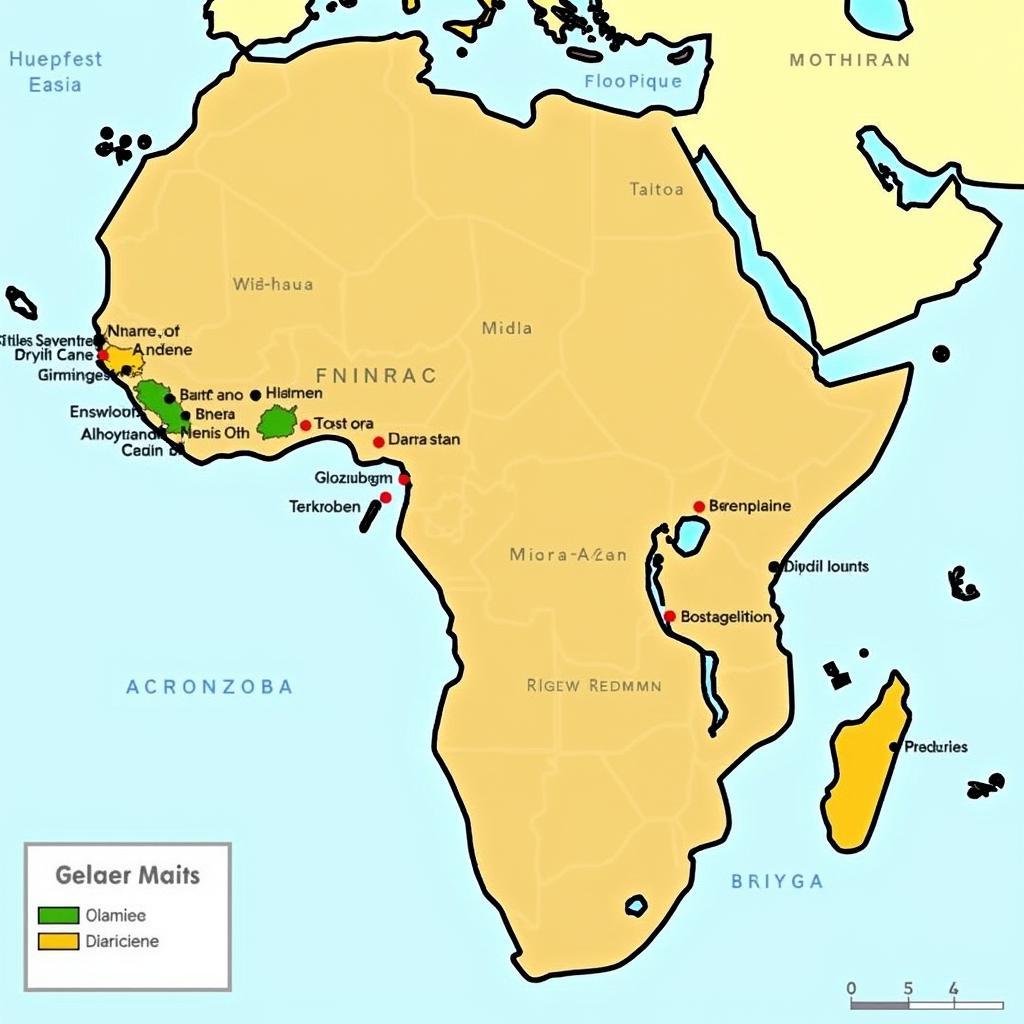Unveiling the Resilience of African Desert Tribes
The captivating world of African Desert Tribes reveals a story of human resilience, adaptation, and cultural richness. These communities, scattered across the arid landscapes of the Sahara, Kalahari, and Namib deserts, have developed unique ways of life, deeply intertwined with their challenging environments. From ancient traditions to innovative survival strategies, exploring the lives of African desert tribes offers a glimpse into a world often misunderstood.
Adapting to the Harsh Desert Climate
Life in the desert presents a constant struggle against the elements. African desert tribes have mastered the art of survival in these extreme conditions. Water scarcity is a major challenge, and these communities have devised ingenious methods for locating and conserving this precious resource. Some tribes follow the migratory patterns of animals to find underground water sources, while others have developed complex systems of wells and rainwater harvesting. Their intimate knowledge of the desert flora and fauna is essential for their sustenance, providing food, medicine, and materials for shelter. The ability to predict weather patterns, navigate by the stars, and read the subtle signs of the desert landscape is crucial for their survival. Check out this fascinating article on the diverse tribes of Africa: African different tribes.
What are some common survival strategies of desert tribes?
Desert tribes employ diverse survival strategies, including water conservation techniques, knowledge of edible plants, and tracking animal migrations.
The Rich Cultural Tapestry of African Desert Tribes
Beyond survival, African desert tribes possess a vibrant cultural heritage. Music, dance, and storytelling are integral to their social fabric, preserving their history and passing down knowledge through generations. Their unique art forms often reflect their close relationship with nature, incorporating natural materials and motifs inspired by the desert landscape. Each tribe has its own distinct customs and traditions, from elaborate ceremonies marking important life events to unique social structures and belief systems. These cultural expressions are not merely decorative; they play a vital role in strengthening community bonds and maintaining their identity in the face of external pressures.
Facing Modern Challenges: Preserving Traditions in a Changing World
Modernization and globalization pose significant challenges to the traditional way of life of African desert tribes. Increased contact with the outside world can lead to cultural assimilation and the erosion of ancient customs. Competition for resources and land rights further exacerbates their vulnerability. However, many tribes are actively working to preserve their cultural heritage while adapting to the demands of the 21st century. Sustainable tourism initiatives offer opportunities to share their culture with the world while generating income for their communities. Educational programs aim to empower future generations with the knowledge and skills needed to navigate the changing landscape while upholding their traditions. Want to learn more about the unique attire of African tribes? Take a look at this resource: African tribal costume.
How are desert tribes adapting to modern challenges?
Desert tribes are adapting to modern challenges through sustainable tourism, educational programs, and efforts to maintain their cultural identity while engaging with the outside world.
The Unique Tribal Structures and Governance
African desert tribes exhibit a variety of social structures, each adapted to their specific environment and cultural heritage. Some tribes are nomadic, moving across the desert in search of resources, while others have established permanent settlements. Traditional leadership structures, often based on lineage or seniority, play a vital role in maintaining social order and resolving disputes. The collective responsibility for the well-being of the community is a fundamental principle in many desert societies. Understanding these complex social dynamics is crucial for appreciating the resilience and adaptability of these remarkable communities. Read more about the aboriginal tribes of Africa here: African aboriginal tribes.
How are desert tribe communities structured?
Desert tribe communities often have traditional leadership structures based on lineage or seniority, with a focus on collective responsibility and adaptability to their environment, which might involve nomadic or settled lifestyles.
Conclusion: A Testament to Human Endurance
The African desert tribes are a testament to human endurance and ingenuity. Their ability to thrive in some of the harshest environments on Earth is a powerful reminder of the adaptability and resilience of the human spirit. By understanding and appreciating the rich cultural tapestry and unique challenges faced by these communities, we gain a deeper understanding of the diversity and complexity of human experience. Let’s continue to explore and support the preservation of these unique cultures for generations to come. The keyword, African desert tribes, opens a window into a world of incredible human adaptation. For a specific example, you can research the African tribe with long necks: African tribe with long necks.
FAQ
- What are some of the largest African desert tribes?
- How do African desert tribes get their food?
- What are the traditional beliefs of African desert tribes?
- How has climate change impacted African desert tribes?
- What are some common misconceptions about African desert tribes?
- How can I learn more about specific African desert tribes?
- What are the challenges faced by African desert tribes today?
Need more support? Please contact us via Phone: +255768904061, Email: [email protected] or visit our address: Mbarali DC Mawindi, Kangaga, Tanzania. We have a 24/7 customer support team available to assist you.

